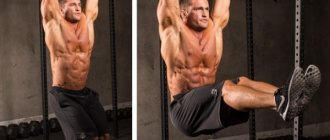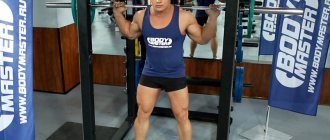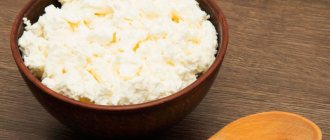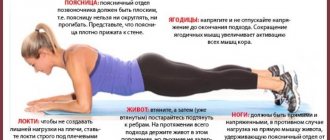Summer is approaching, which means that the number of people wanting to get into shape is constantly growing. And it needs to be done quickly, in the format “I sat on the stove for 30 years, and then got up and went to do great things.” Today we will talk about how to build muscle in a month.
It is impossible to become a bodybuilder in this period. If you want to turn into the second Schwarzenegger in 30 days, close this article and open the books of science fiction writers.
But getting your body in shape and gaining muscle mass in the right places or throughout the body is a real task.
Who is this program suitable for?
This material will suit:
- Skinny guys who never knew, and suddenly forgot, what it was like to be a pumped-up athlete;
- For girls who want to gain muscle in certain areas . For example, in the area of the buttocks.
- Anyone who, for any reason, wants to quickly gain about 5 kilograms of muscle mass . The result will be individual for everyone. Someone will gain 2 kilograms, while another athlete will manage all 10 kg. Read more about this in the material “How quickly do muscles grow in a natural man?”
They'll pick everything up.
The technique that we will describe below requires preparation for long-term mass gain. You need to establish a brain-muscle connection and make the process enjoyable.
There is no time for the first time. But you can get a pleasant process. We read about this in the material about losing weight in a month.
Base only
Basic multi-joint exercises are what you need to rely on for the fastest possible mass gain. We will only use them, but in large “dosages”.
Answer the question “How to build muscle in a month?” impossible without understanding the benefits of basic movements:
- Pumping the maximum number of muscles . You don't need to do a lot of exercises and take up precious training time. The workouts are short and effective;
- Release of anabolic hormones . Testosterone and other compounds that promote muscle growth are synthesized during basic movements. If the hormonal system is not functioning well, muscle pumping becomes difficult or impossible.
Choosing a lesson system
To solve the dilemma of how to pump up in a month, an inexperienced athlete begins to quickly increase speed. Sudden jerks can end in disaster. The desire to get a final positive result in a short time can incite you to take the wrong steps.
Properly selected exercises effectively develop muscle mass. The most popular request on the Internet is: how to pump up your butt in a month? By identifying the main problem, you can evenly distribute the efforts of the training process.
A person loses weight evenly. Massages and dietary complexes increase the rate of reduction of the fat layer and increase the tone of selected parts of the body. Experienced athletes recommend:
- study four days of the week;
- the minimum daily water intake is two liters;
- consume a certain amount of calories (the “multiples of 40%” rule - carbohydrates, proteins 40%, fats 20%);
- get enough sleep, 8 hours of rest;
- record progress with photographs, videos, centimeter measurements and keeping a training diary.
It is necessary to start and record all your training and achievements in a diary. Each entry is made according to the following type:
- dates of the day;
- time spent training;
- meal schedule;
- menu of consumed products.
This is how progress is tracked and the selected program is tested.
Exercises to pump up muscles in a month
Let's bet on:
- Squats. We will perform 20 squats with a heavy barbell in one approach. After them we will perform a pullover;
- Medium grip pull-ups to chest. The best exercise for the back;
- Bench press;
- Dips;
- Bent-over barbell row;
- Deadlift;
- Farmer's walk with dumbbells or special heavy suitcases.
This is where our complex ends. Only these exercises will give results in the shortest possible time and will allow you to work as often as possible, so as not to waste extra time on recovery. Only they will give you an understanding of how to build muscles in a month.
Is it possible to pump up with light weights? Is it possible to pump up with small weights?
Is it possible to grow muscle without lifting heavy weights? How many repetitions of an exercise should you do for your muscles to grow? Some say 8-10 times and use heavy weights, others say 15-25 (and lift lighter weights). At the same time, both muscles have muscles, which completely confuses beginners. Who is right and what is the best way to train?
In order for muscles to grow, they need to be loaded more than they are used to, and the load must increase over time. These are two fundamentally important points for muscle growth. There are other factors, but this is the most important thing. If you use the same weights as six months ago, the muscles get used to it: if the load does not change, there is no reason for the muscles to change either. From this point of view, it doesn't really matter whether you do eight reps with a heavy barbell or 20 reps with a light barbell. If you exercise your muscles and increase the load over time, they will grow.
The second factor is the time that the muscle is under load during one approach. The role is played not by the number of repetitions, but by the number of seconds the muscle works. Repetitions are used for convenience.
The optimal range for growth is considered to be 20-60 seconds. And this automatically includes a very different number of repetitions, although 8-12 repetitions performed at a moderate pace are considered “ideal” in terms of the ratio of weight and time under load.
How muscles grow
At high magnification, it is clear that the muscles consist of many small threads. Each “thread” is a separate cell, very long. Muscles become larger when each cell becomes thicker. And they can become thicker for two reasons.
- Inside each cell there are even smaller “strings”. They run parallel to each other and are called myofibrils. They contract inside the muscle cell and provide movement.
- The myofibrils inside each cell are surrounded by a liquid nutrient medium - sarcoplasm. It accumulates and supplies them with energy for work. Sarcoplasm can also increase in volume, as if inflating the cell from the inside and making the muscles visually larger.
High repetition training with light weights is very energy intensive and uses up a lot of energy (glycogen). In response, the body will try to accumulate it in reserve. This stretches the muscle cells over time, creating the appearance of "bloated" muscles (which are thought to "deflate" quickly if you stop exercising).
Training with heavier weights and lower repetitions increases the number of contractile proteins - myofibrils.
This is where the idea came from that high-repetition training with light weights only gives “false” muscle growth, and heavy weights are the only thing that grows real muscles, which is wrong.
Many studies confirm that there is no difference in growth between both approaches (1, 2, 3, 4, 5, 6). There is an assumption that the increase in fluid in muscle cells stretches the cell membrane. This is perceived by the body as a threat to the integrity of the cell, so it responds with anabolic signals, which triggers (under other conditions) muscle growth.
Another complaint about high-repetition training is that it targets “slow” fibers, which are resistant to fatigue, are unable to generate much force, and grow poorly. And they do not include “fast”, well-growing fibers. But heavy weights include fast-twitch fibers, so they are better for muscle growth.
There is some truth to this, but it's not quite as strict: high-rep training can also turn on fast-twitch fibers, but only when you work to real and complete failure. As the slow fibers get tired, the fast fibers are activated.
So, you can build muscle with high reps and light weights, but you'll have to train to failure on every set, and the intense burning sensation in the muscle isn't the most pleasant feeling.
conclusions
You can work in any rep range as long as you work the muscles more than usual and progress in the load.
Usually, few people are faced with a choice: either heavy weights or high repetitions. If you want to gain muscle as quickly as your genetics will allow, lifting fairly heavy weights (60% of your one-rep max and above) should be part of your training. But adding higher reps can improve results because you'll be developing all the fibers and using all the muscle growth mechanisms.
Friends, support our group on Facebook, share this post with your friends or click the “Like” button! and you will always be aware of the latest news from the “Duty Rocking Chair”!
For you, we collect the best workouts, recommendations for proper nutrition and, of course, humor from the world of beautiful, energetic and healthy people - like you and me!
Program for pumping up in 30 days
Let's divide the whole body work into 2 days. It will look like this:
Day #1
| Exercise | Approaches | Repetitions | Rest after approach in minutes | Rest after exercise in minutes |
| Pull-ups | 5 | 10 | 2,5 | 4 |
| Bench press | 5 | 10 | 2,5 | 4 |
| Bent-over barbell row | 5 | 12 | 2 | 3 |
| Dips | 5 | 12 | 2 | — |
Day #2
| Exercise | Approaches | Repetitions | Rest after approach in minutes | Rest after exercise in minutes |
| Squats | 1 | 20 | — | 0 |
| Pullover | 1 | 20 | — | 5-7 |
| Deadlift | 5 | 20 | 2 | 4 |
| Farmer's Walk | 5 | 50 meters | 1,5 | — |
We work using the super squat system.
After a set of squats it should be very, very hard. You need to choose the weight with which you usually do 10 squats, and do 20. Only then will it be of any use.
We train 3-4 times a week. There is no need to work more - too much stress will force you to quit training after 1-2 weeks of training. Apathy towards the goal will appear.
It's better to focus on recovery.
Nutrition and regimen
When recovering from training, use the following recommendations:
- Consume 500-1000 calories more than your daily value . The best product for gaining calories is milk. It can be replaced with kefir or fermented baked milk;
- Use sports nutrition that really works;
- The day after training, sleep 30-60 minutes more. The body needs additional energy to recover;
- Use water treatments . Contrast showers, douches or swimming in the sea have a positive effect on the functioning of the hormonal system. They accelerate muscle recovery and growth;
- Win . Boost testosterone and other anabolic hormones with the right attitude and action. If you don’t believe in yourself, then it’s better not to expect results.
Did you know how to build muscle in a month?
Do you think this is impossible?
Share your results and opinions in the comments!
Remember that the more likes and reposts, the more valuable information you can get on the pages of this site.
Share link:
- Click to share on Twitter (Opens in new window)
- Click here to share content on Facebook. (Opens in a new window)
Is it possible to pump up with light weights? Is it possible to pump up muscles with light weights?
For many years, bodybuilders have known that pumping up muscles and increasing their size requires hard work with heavy working weights in low repetitions. But working with light weights gives the muscles “Tone”, but increases their size and strength very ineffectively. In essence, this statement is based on the physiological principle of the hierarchy of involvement of muscle fibers in the work
.
The principle states that to provide a certain movement, the body recruits exactly the necessary number of muscle fibers, starting with type 1 or slow-twitch fibers. When these fibers fatigue (and "Fatigue" is the key word here, as you'll see), type 2a and type 2b muscle fibers, known as fast-twitch, come into play. Their neuromuscular connections are activated. When some resistance is applied to a muscle, a signal is sent to the brain with the requirement to produce more neural output to engage the second type of muscle fibers. For years, it was believed that this required increasing the level of intensity of stress applied to the muscle, that is, lifting increasingly heavier working weights. In fact, most textbooks on the physiology of muscle contraction state that type two muscle fibers are most prone to increases in size and strength, that is, to pumping. The first type, slow-twitch fibers, are more endurance fibers and work actively under light and prolonged loads, for example when working with light weights in a high number of repetitions. Again, it was believed that the body does not activate type 2 fibers unless necessary, although they can be activated when type 1 fibers are tired.
Bodybuilders have large, ripped muscles because they specifically hypertrophy type 2B muscle fibers and achieve this by lifting heavy weights, however, in recent years this claim has been called into question.
Muscle biopsies from champion bodybuilders showed a predominance of type 2a muscle fibers, not type 2b, as expected. Type 2a fibers are considered intermediate fibers and have characteristics of both slow- and fast-twitch fibers. This suggests that a typical bodybuilder's workout of 8-12 reps per set will produce more noticeable muscle growth and pumping than low reps with heavy weights. Although powerlifters and weightlifters are quite strong, many do not exhibit the remarkable muscle hypertrophy that would be expected as a result of their constant low rep work with heavy weights.
As a result of many experiments, training with blood flow restriction using the kaatsu method - when a tourniquet is used to block blood flow in the working muscle - has shown a significant increase in muscle mass, even when working with light weights. Scientists explain this phenomenon for various reasons, but the main one is the local accumulation of fatigue products due to cessation of blood flow. Increasing fatigue, in turn, is interpreted by the brain as a requirement to engage type 2 muscle fibers, which ends in their hypertrophy.
In one experiment, subjects lifted light weights but at high tension, meaning they held a tempo much slower than traditional, and also forcibly contracted the target muscle at the top of each repetition. Again, despite using a lifting weight of 20% of one-rep max, which is considered very light work, subjects showed pumps and increases in muscle size comparable to those lifting much heavier weights, but in a conventional manner. The decisive factor for this outcome was the local accumulation of fatigue products, which not only activated type 2 muscle fibers, but also contributed to a more active release of anabolic hormones, such as growth hormone and IFR-1, the signal for which was the accumulation of fatigue factors in the trained muscle, such as lactic acid.
In the latest study, 15 middle-aged 21-year-old men, each with at least six months of training experience and training at least three times per week, performed four sets of single-leg extensions using different training protocols:
1 90% of one-rep max, to failure (these are heavy weights). 2 30% of the maximum weight in one repetition, but the same number of repetitions as in the first protocol (not to failure). 3 30% of one-rep max, to failure (these are light weights).
The scientists wanted to evaluate the difference in the level of muscle protein synthesis in the trained muscle, measuring both the synthesis of contractile proteins and the synthesis of connective fibers. Increased muscle protein synthesis is directly related to muscle pumping, increasing muscle size and strength, especially in the case of contractile proteins.
It turned out that light weights and working to failure (protocol three) were more effective in increasing protein synthesis compared to the first protocol, which involved heavy loads and low repetitions. After four hours, the level of protein synthesis was equal in the first and third groups, but, note, only in the third did it remain elevated for another 24 hours.
The authors of the experiment suggested that training with light weights to failure resulted in greater muscle fatigue, which had a positive effect on the synthesis processes in them. Only the third protocol ensured a stable level of synthesis of all proteins - contractile, connective and mitochondrial. This suggests that this style of training can increase both strength and size, as well as muscle endurance at the same time. In addition, the third group showed a higher level of signaling factors stimulating the activity of muscle satellite cells, which is very important for muscle growth.
The scientists suggested that this information would be useful for those who are injured or unable to lift heavy weights due to age. They noted that people over 70 years of age show resistance to resistance training, that is, they do not show a particularly noticeable increase in protein synthesis levels after exercise. This obstacle can be overcome by increasing the volume of training, since lifting light weights to failure can fully activate the muscle protein synthesis mechanism. The main thing is to achieve maximum accumulation of fatigue products in the target muscle. According to the study, this can be done by working at high reps (about 34 in this experiment) with light weights, but to failure.
The key here is to work every Set to failure, regardless of the number of repetitions. Simply lifting light weights without pushing a set to failure and expecting muscle growth is unrealistic because it does not activate the muscle protein synthesis signaling factors that play a key role in pumping muscle.
And yet, if some “Expert” in the gym tells you that to pump up “like this” chest, you definitely need to bench press 150 kg, you don’t have to believe him. With proper training with moderate weights (but to failure) and appropriate nutrition, you can also increase your pectoral muscles, but at the same time keep your shoulder and elbow joints and ligaments healthy. Victor Tribniksky.











